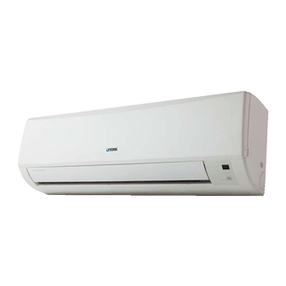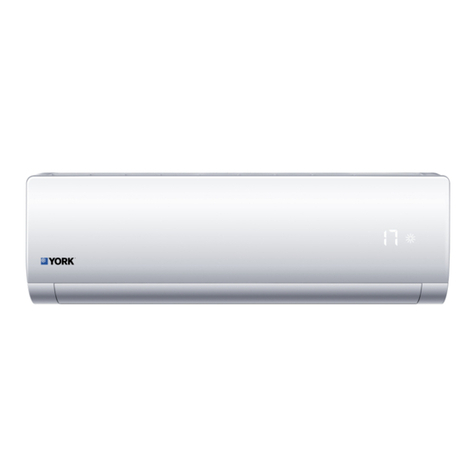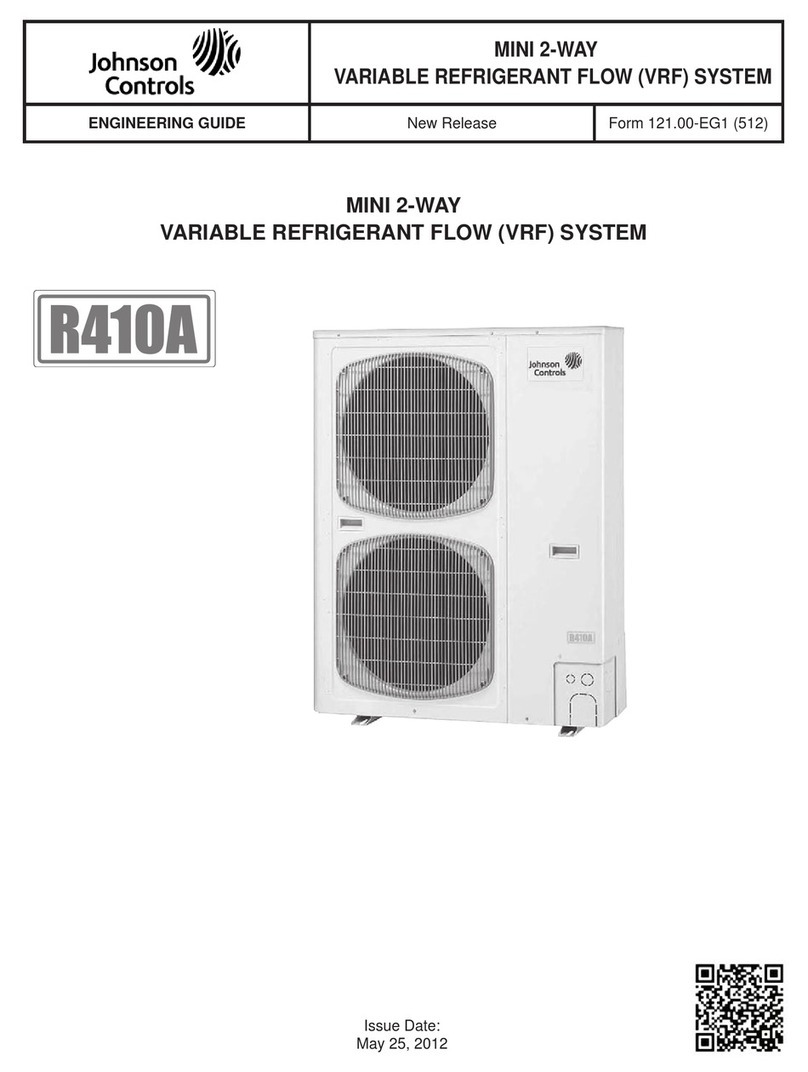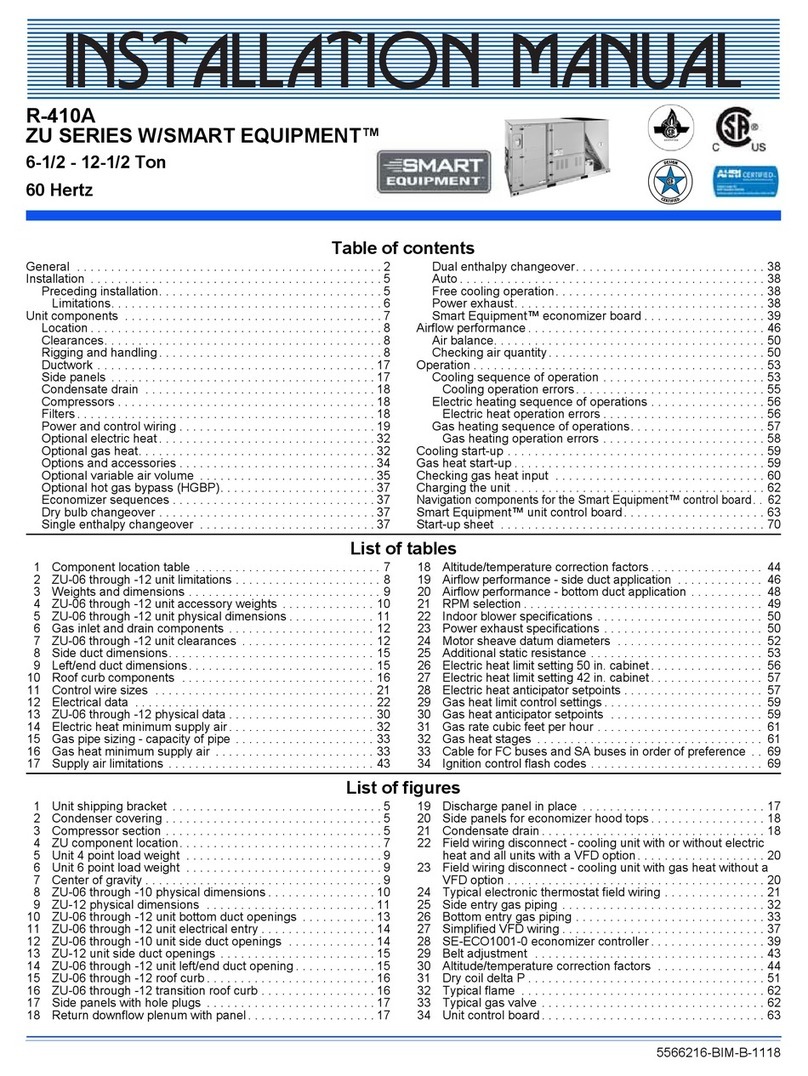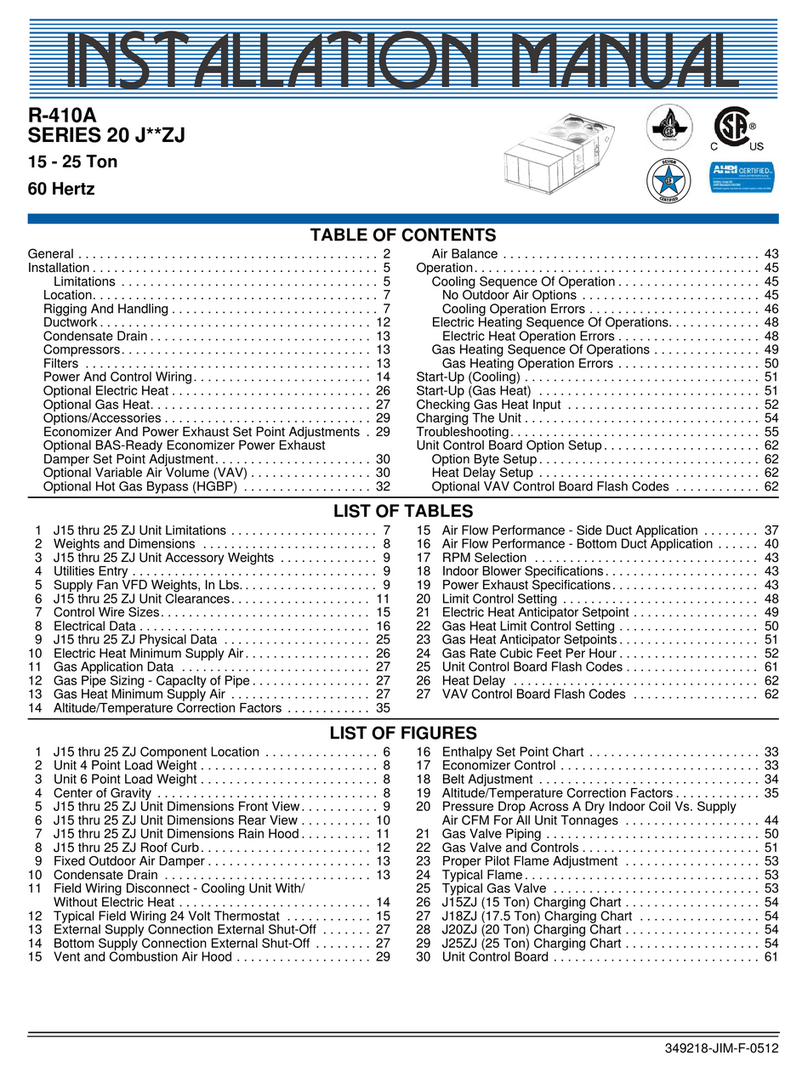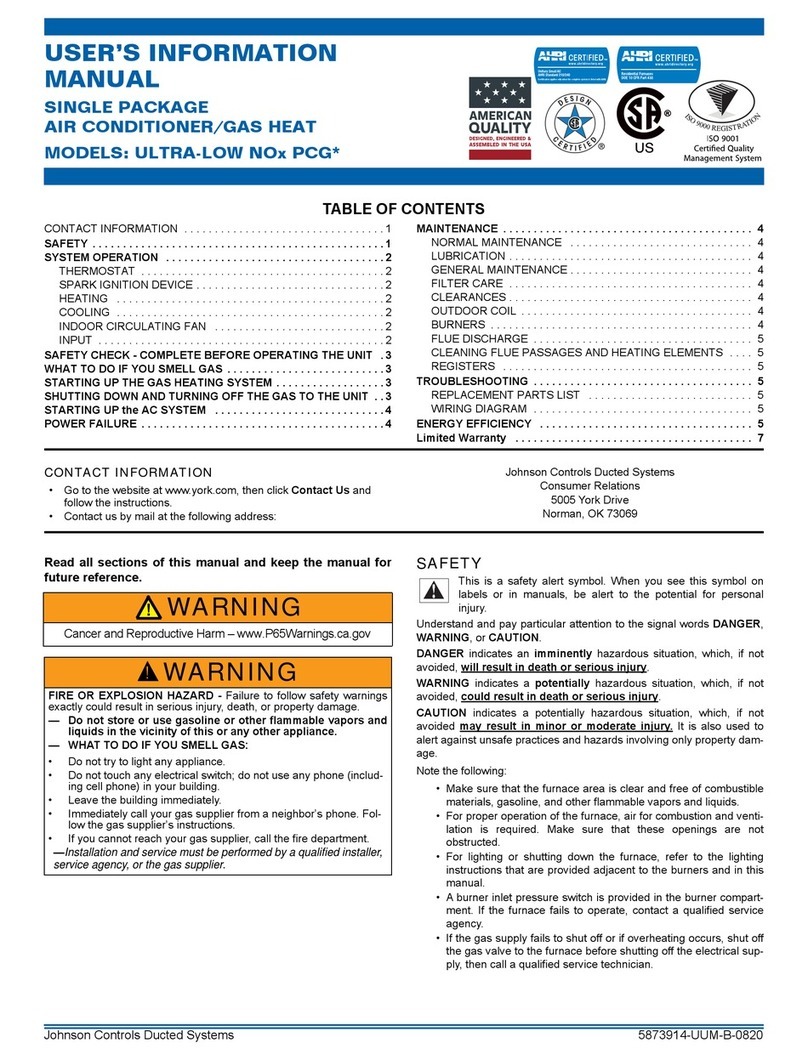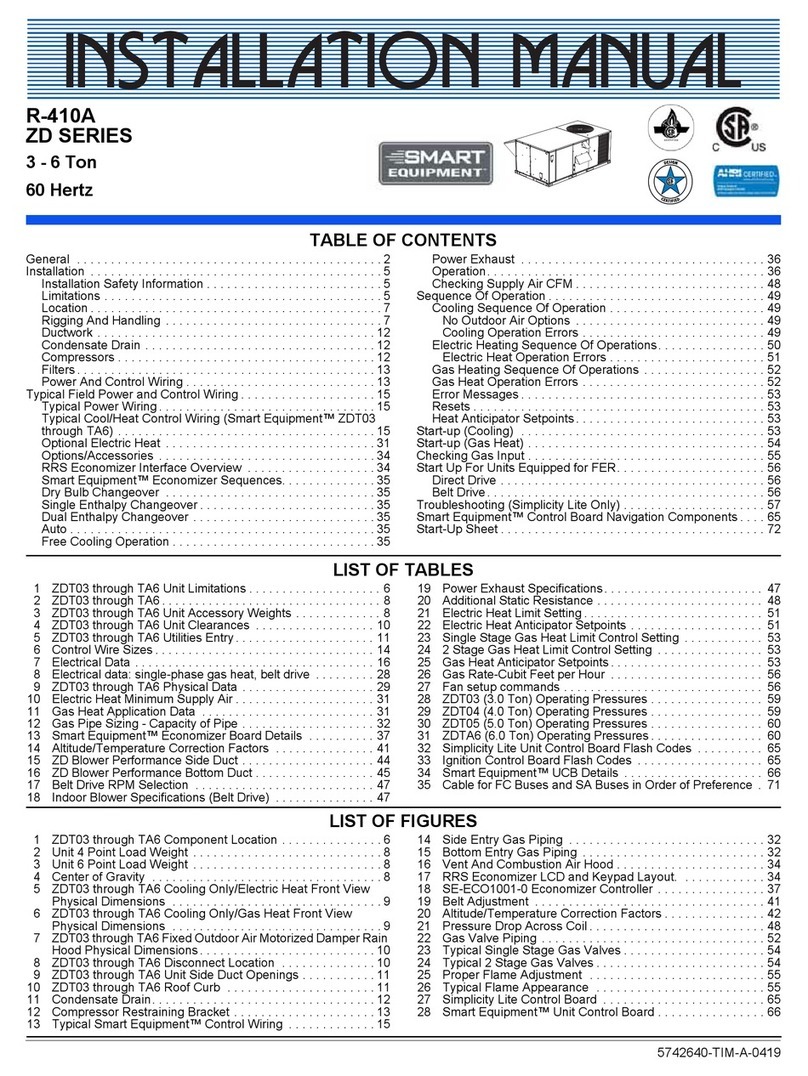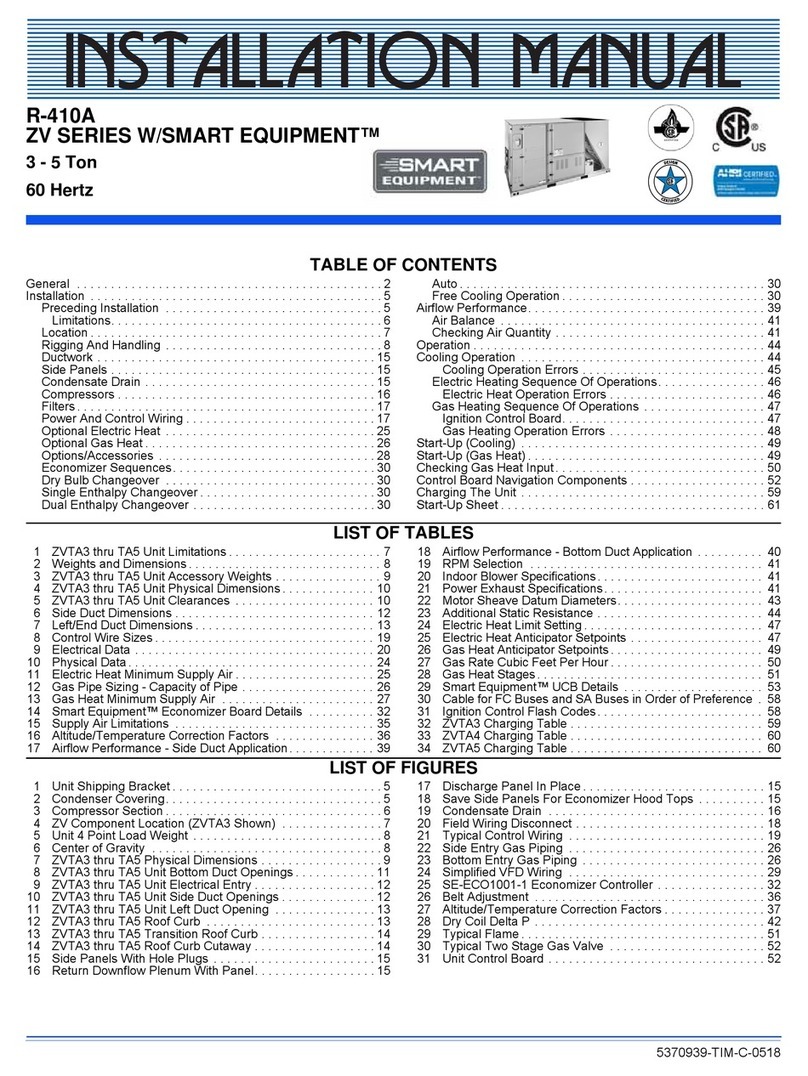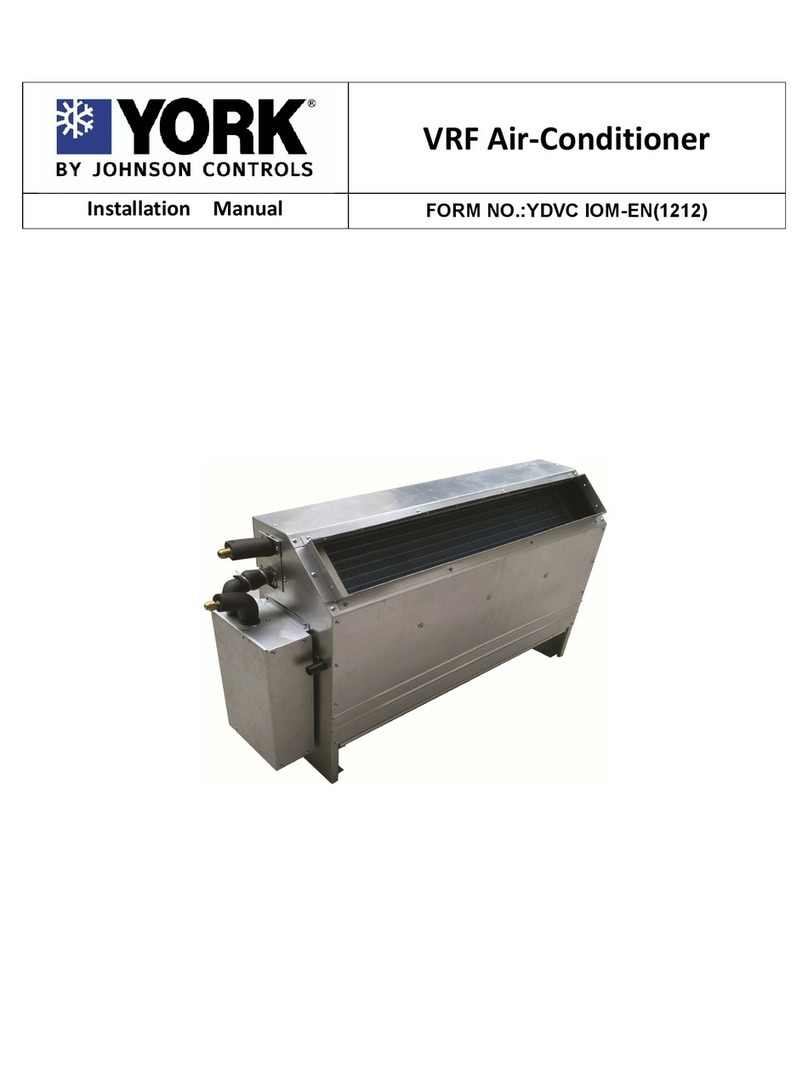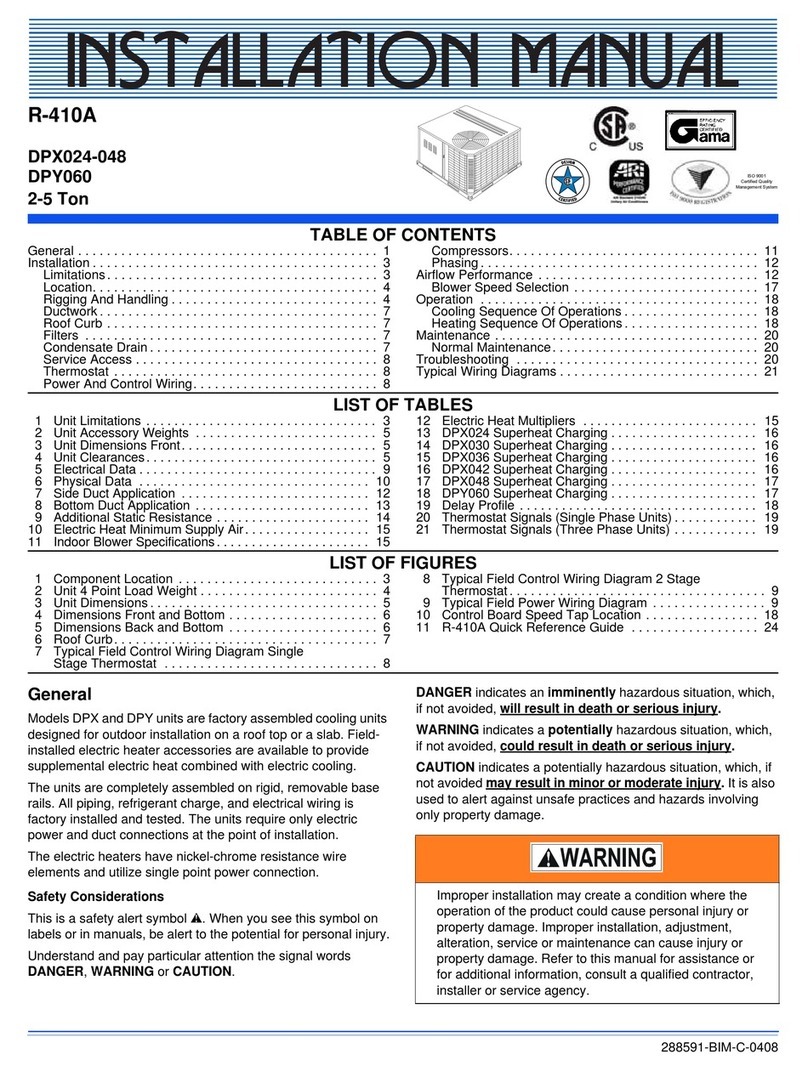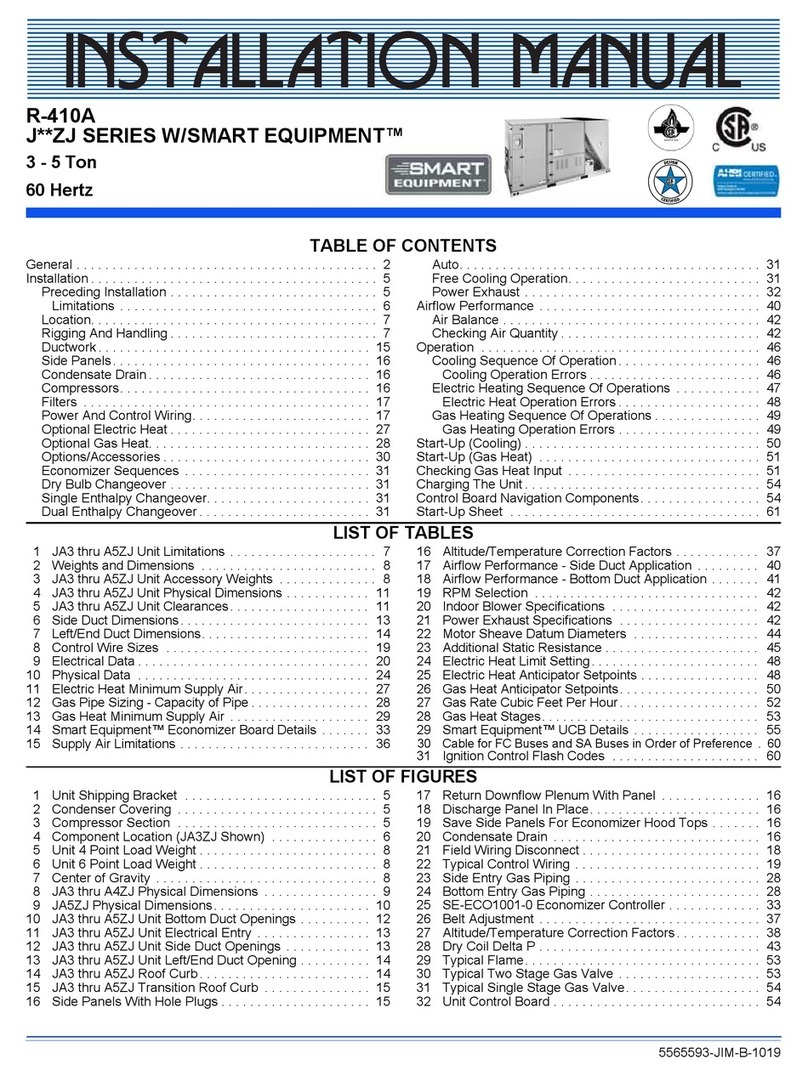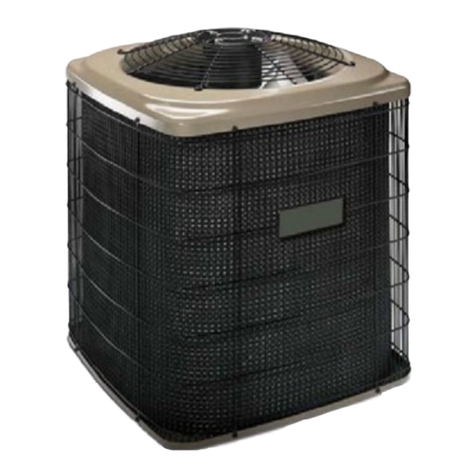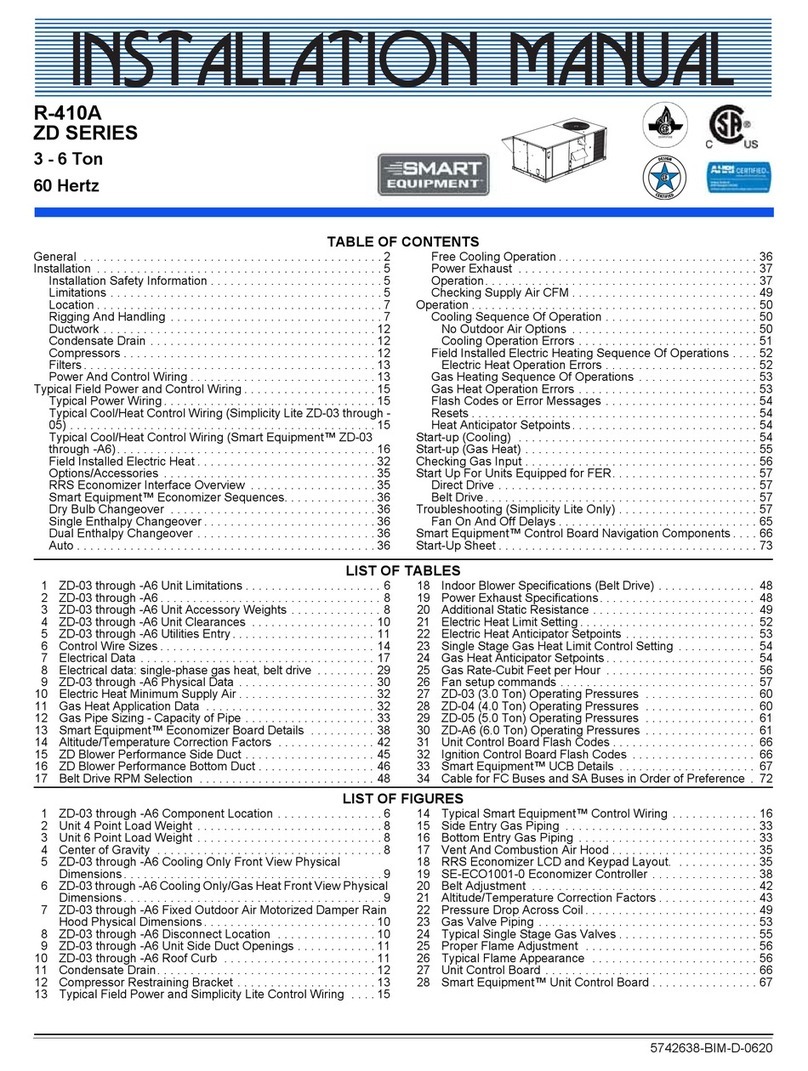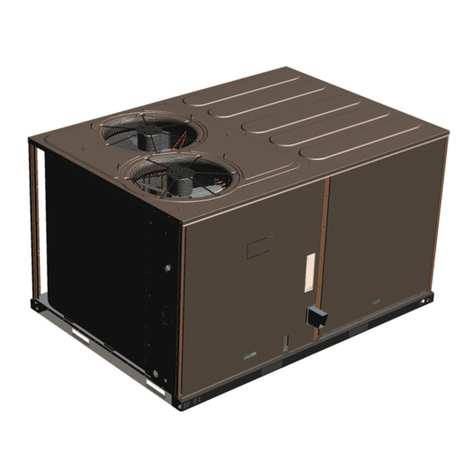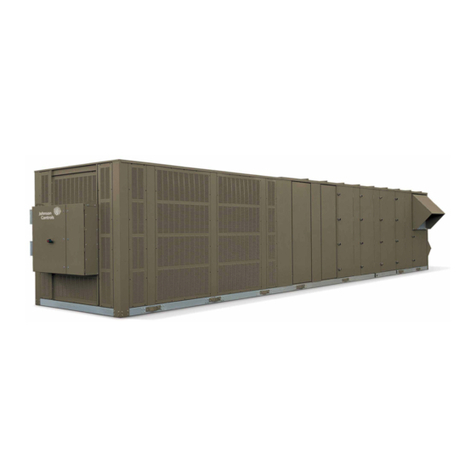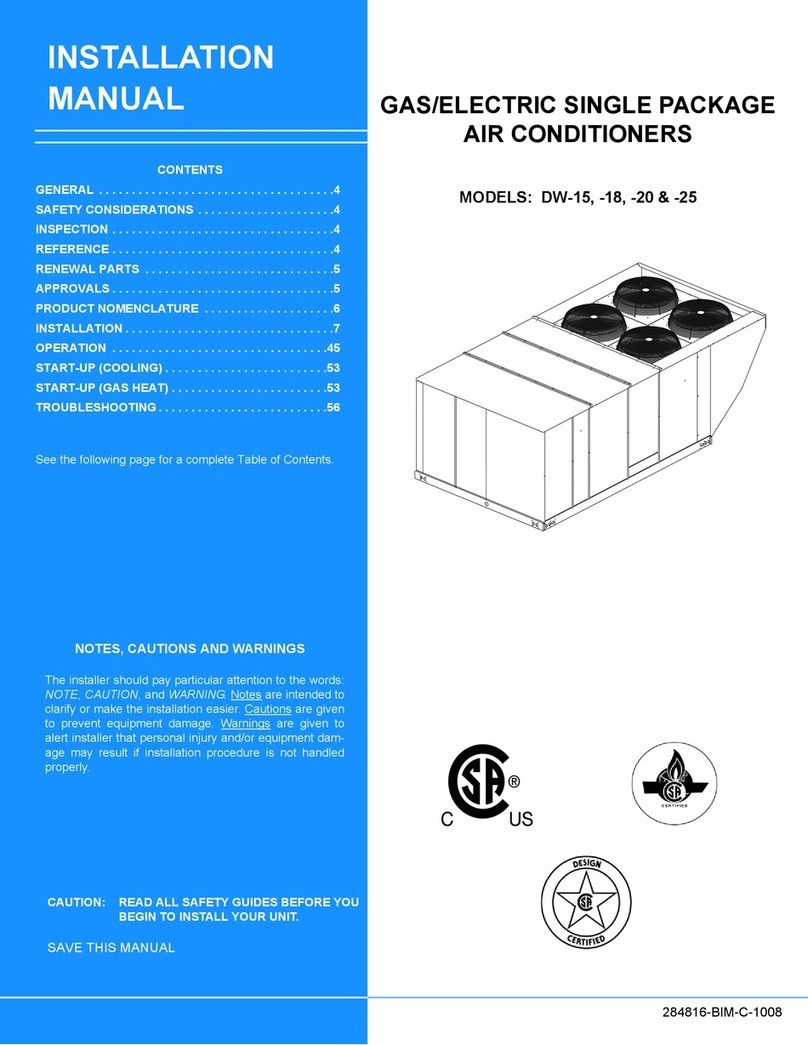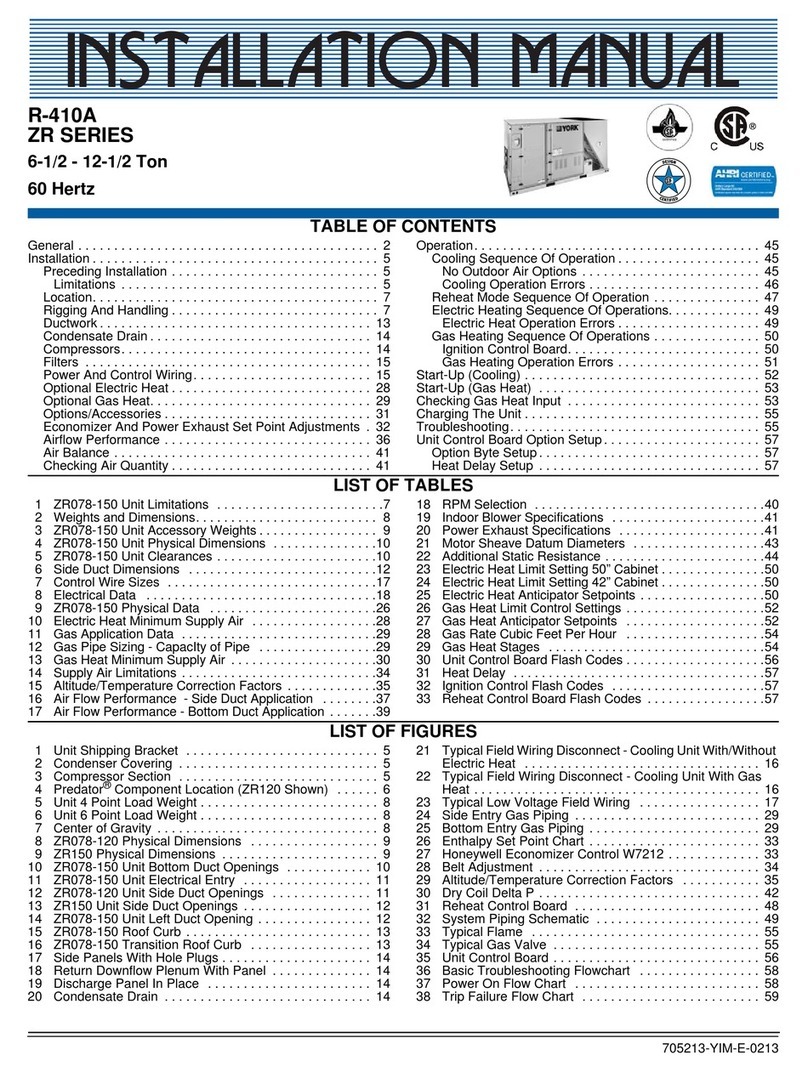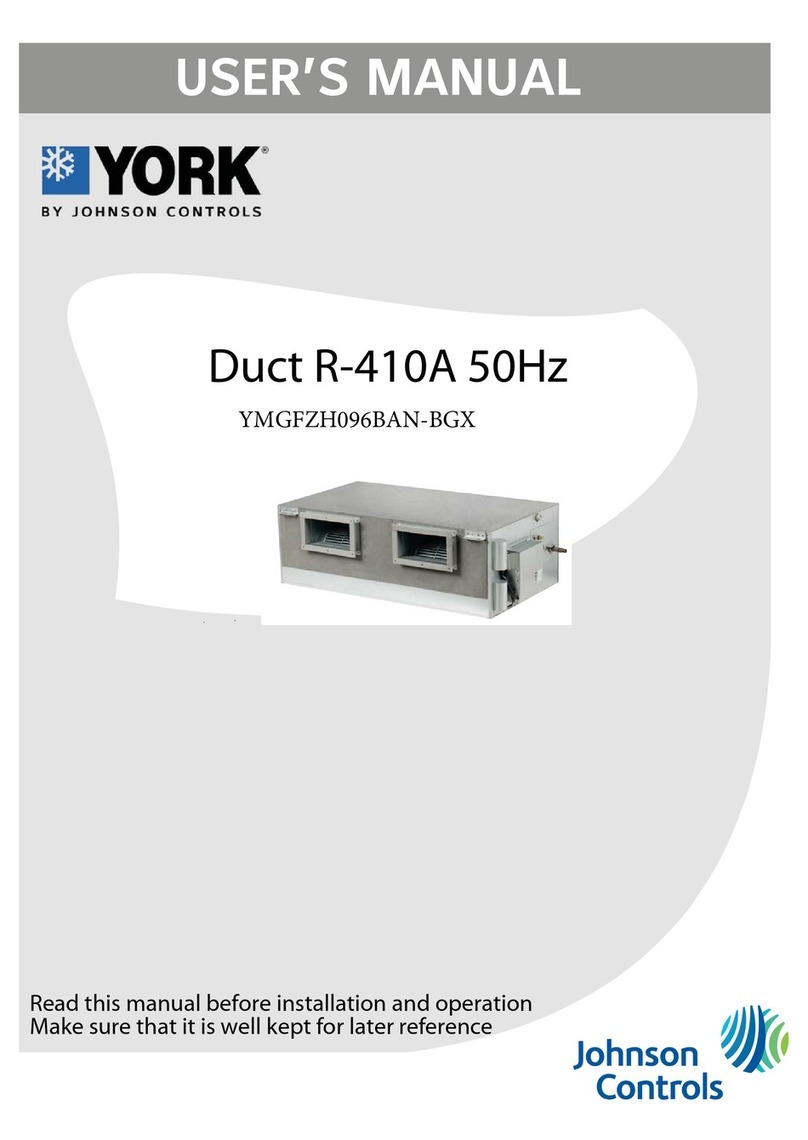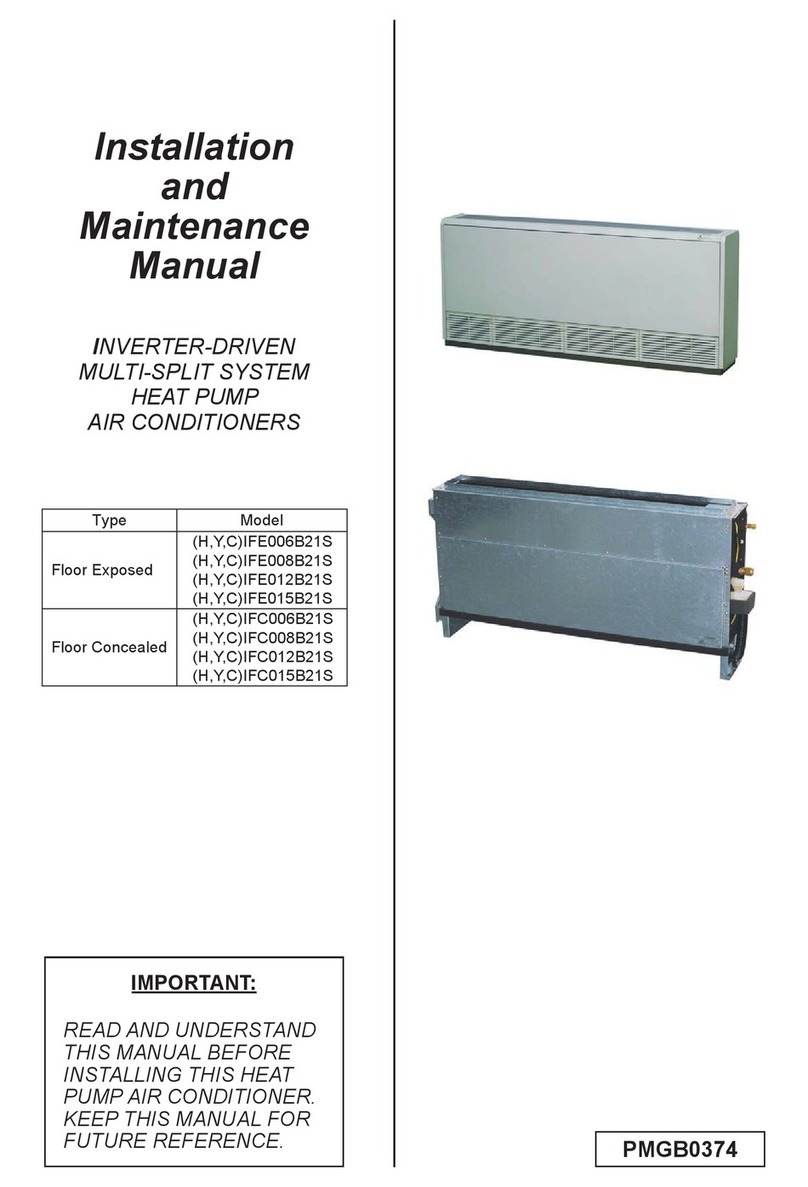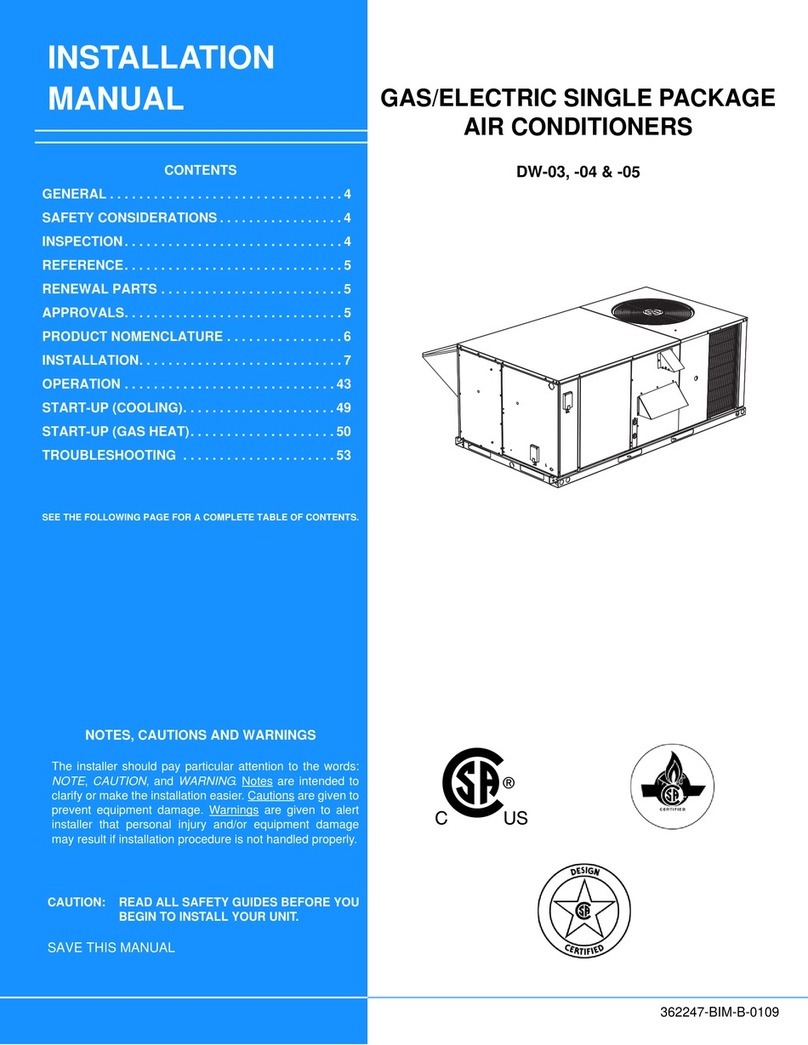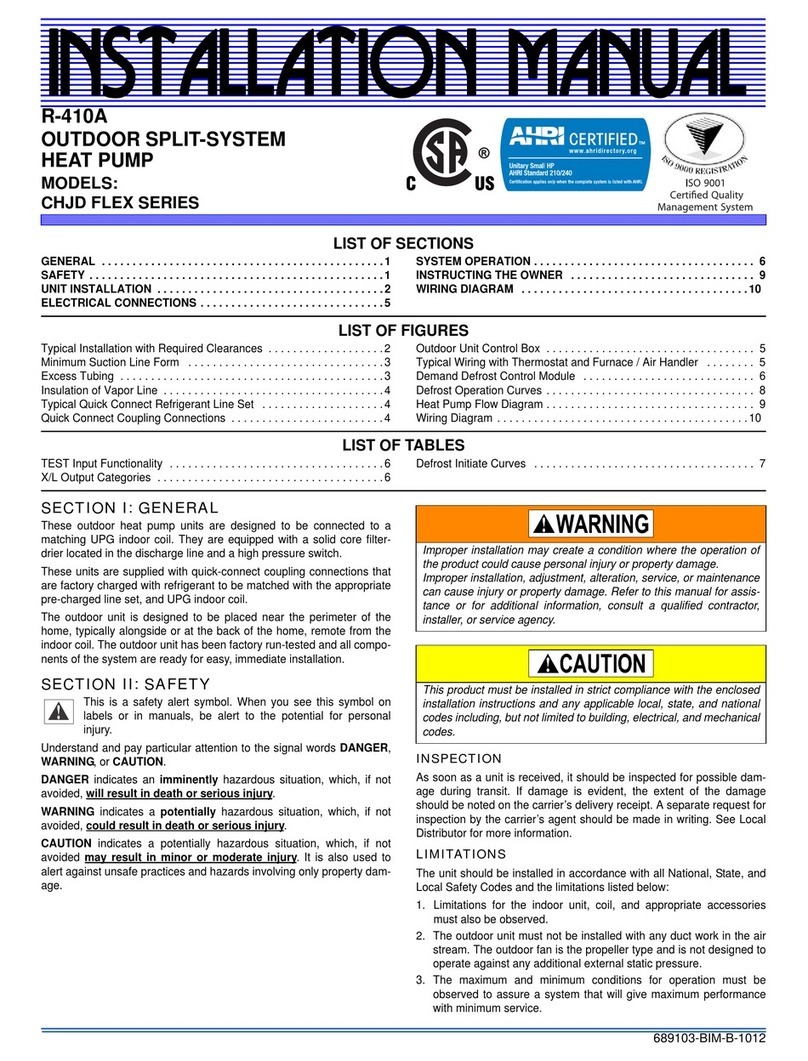
5844973-UIM-A-0920
2 Johnson Controls Ducted Systems
Due to system pressure, moving parts, and electrical components,
installation and servicing of air conditioning equipment can be hazard-
ous. Only qualified, trained service personnel must install, repair, or ser-
vice this equipment. Untrained personnel can perform the basic
maintenance functions of cleaning coils and filters and replacing filters.
Observe all precautions in the literature, labels, and tags accompanying
the equipment when working on air conditioning equipment. Ensure to
follow all other applicable safety precautions and codes including ANSI
Z223.1 or CSA-B149.1 (latest edition).
Wear safety glasses and work gloves. Use quenching cloth and have a
fire extinguisher available during brazing operations.
SECTION III: MODEL NUMBER NOMENCLATURE
SECTION IV: INSTALLATION
INSTALLATION SAFETY INFORMATION
Read these instructions before continuing the unit installation. This is an
outdoor combination heating and cooling unit. Give the instructions to
the homeowner, and instruct the homeowner to retain them for future
reference.
Adhere to the following:
• Refer to the unit rating plate for the approved type of gas for this
product.
• Install the unit only in a location and position specified on page 4 of
these instructions.
• Never test for gas leaks with an open flame. Use commercially
available soap solution made specifically for the detection of leaks
when checking all connections, as specified on page 9 of these
instructions.
• Install the unit to operate within the unit's intended temperature
rise range with the duct system and within the allowable external
static pressure range, as specified on the unit name/rating plate
and in Table 7.
• Do not use this equipment for temporary heating of buildings or
structures under construction.
WARNING
Before performing service or maintenance operations on unit, turn off
main power switch to unit. Electrical shock could cause personal
injury. Improper installation, adjustment, alteration, service, or main-
tenance can cause injury or property damage. Refer to this manual.
For assistance or additional information consult a qualified installer,
service agency, or the gas supplier.
CAUTION
This system uses R-410A refrigerant, which operates at higher pres-
sures than R-22. No other refrigerant may be used in this system.
Gage sets, hoses, refrigerant containers, and recovery systems must
be designed to handle R-410A. If you are unsure, consult the equip-
ment manufacturer. Failure to use R-410A compatible servicing
equipment may result in property damage or injury.
!
!
WARNING
If the information in this manual is not followed exactly, a fire or
explosion may result causing property damage, personal injury, or
loss of life.
Do not store or use gasoline or other flammable vapors and liquids in
the vicinity of this or any other appliance.
WHAT TO DO IF YOU SMELL GAS:
1. Do not try to light any appliance.
2. Do not touch any electrical switch; do not use any phone in
your building.
3. Immediately call your gas supplier from a neighbor’s phone.
Follow the gas supplier’s instructions.
4. If you cannot reach your gas supplier, call the fire depart-
ment.
Installation and service must be performed by a qualified installer,
service agency, or the gas supplier.
!
PCG 4 A 24 050 2 X 4 A
123456789
1. Model Family
PCG - packaged A/C with gas heat
PHG - packaged heat pump with gas heat
PCE - packaged A/C with electric heat
PHE - packaged heat pump with electric heat
5. Gas Heating Input BTU/Hr x 1000
050 = 50,000 BTU/Hr input, blank = electric heat
6. Voltage-Phase-Frequency
2 = 208/230-1-60, 3 = 208/230-3-60, 4 = 460-3-60
2. Nominal Cooling Efficiency
4 = 14 SEER, 6 = 16 SEER
7. NOx Approval
X = Low NOx, blank = not Low NOx
3. Cabinet Size
A = small 35.75 x 51.25, B = large 45.75 x 51.25
8. Generation Level
1 = first generation 2 = second generation
4. Nominal Air Conditioning Cooling Capacity BTU/Hr x 1000
24 = 24,000 BTU/Hr, 30 = 30,000 BTU/Hr
9. Revision Level
A = original release, B = second release
Example:
PCG4A240502X4A is a packaged A/C with gas heat, 14 SEER, small cabinet, 2 ton, single-stage heat, 50,000 BTU/Hr gas heat, 208/230 V, single-
phase, Low NOx model, fourth generation, original release.
WARNING
FIRE OR EXPLOSION HAZARD
Failure to follow the safety warning exactly could result in serious
injury, death, or property damage.
Never test for gas leaks with an open flame. Use a commercially
available soap solution made specifically for the detection of leaks to
check all connections. A fire or explosion may result causing property
damage, personal injury, or loss of life.
!
